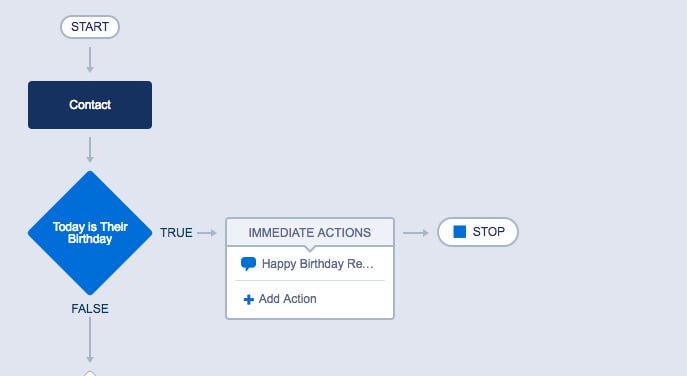No doubt about it- email marketing is a reliable and cost-effective marketing strategy. Studies show that the average return on investment from email marketing stands at $42 for every $1 spent. Salesforce, a reputable CRM tool, has made email marketing more efficient as it allows you to leverage your CRM data. It also helps you to automatically add and update data based on your email marketing efforts.
Any organization that uses Salesforce has access to a wealth of data that can help them create powerful email campaigns. And we can never really overstate the importance of data when it comes to marketing. For example, you can use data to segment and understand your audience and thereby send them personalized and meaningful content. According to McKinsey, personalization is the prime driver of marketing success.
Read on to unravel the benefits of using Salesforce to send emails.
The Power of Emails in Salesforce
Emails are a tested and proven way for brands to build a relationship with their subscribers, existing clients and reach out to new prospects. Depending on your strategy, there are different types of emails that you can send using Salesforce; and these include:
- 1-1 Emails to a Contact or Lead
- Mass Emails via Campaigns
- Workflow emails such as birthday emails
- Case Updates via Email-to-Case
- System emails: Password reset, Salesforce approval emails, etc.
Salesforce allows you to create emails using the following methods:
- Text,
- HTML,
- Custom and,
- Visualforce, which is considered the most advanced.
Text, HTML, and Custom are useful when sending basic emails to your Contacts and Leads. Visualforce helps you to create templates for special emails that showcase your brand. There is a Salesforce guide on how to make email templates on Visualforce.
In this article, we will solely focus on creating and sending 1-1 emails, mass emails, and workflow emails.
There are three main methods to do so:
- You can use Salesforce's email capabilities,
- Integrate your email tool with Salesforce or,
- Use a Salesforce partner app from the AppExchange.
We’ll review all these options to help you decide which one will work best for your organization.
If you are interested in Email-to-Case or System Emails, please visit the Salesforce Help Portal to learn more.
Method One: Using Salesforce's Email Capabilities
There are three types of emails you can send using Salesforce’s Email Capabilities:
- Sending one-off emails to a Contact or Lead
- Sending small group emails
- Email your Campaign Members within a Campaign
Let’s have a detailed look at the three types.
Sending One-off Emails to a Salesforce Contact
If you want to do a one-off email to a Salesforce Contact, simply navigate to the person's Contact record. On the Activities panel, you'll see the option to email the Contact.
Here’s a quick video on how to create one-off emails:
You can create and store email templates in Salesforce under the Templates tab. Then, once you send your email, you can track it (and all the rest of your previously sent emails) in your Activities tab.
If you are having a challenge accessing the email tab on the Activities panel, ask your Salesforce Administrator to add it.
2. Sending small group emails
Create a list view from Salesforce and add list filters so that your email list is more targeted. To do so, go to your Contacts or Leads tab, select a Contacts or Lead View and add filters to your existing list. Once you are happy with your segmented list, click Send List Email to draft your email and send it out.
Here's a video to walk you through the process:
3. Email your campaign members in Salesforce
Let's say you have a Salesforce Campaign for your annual fundraising event. You want to invite people to the event. How do you do it?
- Navigate to your Annual Fundraising Event Campaign in Salesforce,
- Open the Campaign Members’ list,
- Send an invitation to all of the members or just selected members.
Here's a quick 1-minute video on how to email your Campaign Members:
Now that we have discussed the different email types, let’s review how you can automate the process.
Automate your emails in Salesforce
The beauty and strength of Salesforce lie in its automation capabilities that stretch to email marketing. You can automate your emails using Salesforce Process Builder, which triggers emails based on actions within Salesforce. The emails are sent out based on pre-defined logical patterns.
When you create a drip email, for instance, you're creating an email triggered by the addition or field change of a new Contact or Lead. Then, additional emails are scheduled based on your unique drip campaign.
The Benefits of using Salesforce’s Email Capabilities
Here’s a look at some of the benefits of using Salesforce in email marketing.
Salesforce allows you to use your CRM data and create your targeted email list right within Salesforce.
You can use merge tags based on data that Salesforce collects.
There is no additional cost.
The Challenges of using Salesforce's Email Capabilities
Some of the shortcomings of using Salesforce in email marketing include:
You can only send 5,000 emails per day.
Limited reporting: It’s challenging to track basic reports like open rates and click rates.
Limited automation: You need to know how to work with the Process Builder. It takes time to set up an automated process for each Campaign.
Method Two: Using A Native Salesforce Partner Application
There are several Salesforce partner applications that you can use to enhance your email marketing campaigns. You can find these apps in the Salesforce AppExchange.
Predictive Marketing for example, is a native Salesforce application that can help you send mass emails from Salesforce.
The Benefits
Let's look at some of the benefits of using an add-on Salesforce application like Predictive Marketing.
1. Send unlimited Emails from Salesforce
There is no email or user limit with Predictive Marketing. You can send unlimited emails without leaving Salesforce. In addition, it offers a simple drag and drop tool for sending drip, scheduled, and behavioral emails.
2. Use Salesforce Data to segment Campaigns automatically
When you add Predictive Marketing to your Salesforce environment, it's easy to automatically segment your users into a Campaign based on a given criteria. You don’t have to import and export data.
You can segment your email contact list along the following lines:
- Welcome email drip campaign for new subscribers
- Subscribers interested in X
- Contacts who have purchased X who live in the Y area
- All past donors who haven’t donated this year yet (Non-Profits)
- Membership renewal drip campaign
3. Out-of-the-Box marketing reports
Predictive Response provides many out-of-the-box marketing reports.
A few examples include:
- Open, click, and completed rates of emails or campaigns
- Track a contact’s entire journey: email activity, web pages browsed, events attended, etc.
- Email ROI: How much revenue your email campaigns are bringing in.
The Challenges
Some of the challenges include:
Using a Salesforce AppExchange app comes at an additional cost, and this varies based on application and features.
To create, edit and send emails in Salesforce, users must have a basic understanding of the Salesforce platform.
Method Three: Integrate Your Email Marketing Application With Salesforce
Salesforce allows for integration with other email marketing applications. This means that if you use a different email marketing tool to send emails, you can still leverage your Salesforce data to send targeted emails. Many email tools like MailChimp, Constant Contact, or Emma provide integration capabilities; and if you can’t find one, try a connector like Zapier.
The Benefits:
You can keep using your preferred email tool
The Challenges:
Some integrations might cause issues such as importing bad data, duplicate records, data migration challenges, etc.
Switching back and forth between two systems might be time-consuming and hectic.
Using another email tool attracts an additional cost.
Conclusion: Sending Mass Emails from Salesforce
Depending on your organization's size, your day-to-day email duties can range from 5 emails to thousands. With a robust tool like Salesforce, you already have a database of Leads and Contacts you can email. What’s more, it comes with an emailing option.
We have discussed different ways to send emails through Salesforce, and it now all boils down to your current setup and needs. For instance, if you are sending 1-1 emails or small group emails, the out-of-the-box solution might work well for you. However, hiring a Salesforce Consultant to help you set up some of the automated emails via Process Builder is advisable.
If you intend to send thousands of emails or are looking for an easier way to automate your emails, opting for a native AppExchange emailing app or using an integration with your current email provider will be a viable option for you.
Native Salesforce apps, like Predictive Marketing, will significantly reduce your workload as it cuts the need for data integration and using multiple systems for one task. Additionally, native Salesforce apps make it easy to create automated email flows which you can use to send personalized mass emails to your recipients.
If you are interested in learning more about the Predictive Marketing application, please book a demo with us.



